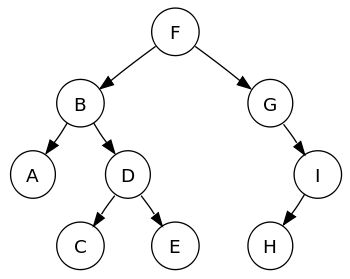The path to becoming a proficient and successful programmer is difficult, but one that is certainly achievable. Data structures are a core component that every programming student must master, and chances are you may have already learned or worked with some basic data structures such as arrays or lists.
Interviewers tend to prefer asking questions related to data structures, so if you’re preparing for a job interview, you’re going to need to brush up on your data structures knowledge. Read on as we list the most important data structures for programmers and job interviews.
1. Linked List
Linked lists are one of the most basic data structures and often the starting point for students in most data structures courses. Linked lists are linear data structures that allow sequential data access.
Elements within the linked list are stored in individual nodes that are connected (linked) using pointers. You can think of a linked list as a chain of nodes connected to each other via different pointers.
Before we get into the specifics of the different types of linked lists, it is crucial to understand the structure and implementation of the individual node. Each node in a linked list has at least one pointer (doubly linked list nodes have two pointers) that connects it to the next node in the list and the data item itself.
Each linked list has a head and tail node. Single-linked list nodes only have one pointer that points to the next node in the chain. In addition to the next pointer, doubly linked list nodes have another pointer that points to the previous node in the chain.
Interview questions related to linked lists usually revolve around the insertion, searching, or deletion of a specific element. Insertion in a linked list takes O(1) time, but deletion and searching can take O(n) time in the worst case. So linked lists are not ideal.
2. Binary Tree

Binary trees are the most popular subset of the tree family data structure; elements in a binary tree are arranged in a hierarchy. Other types of trees include AVL, red-black, B trees, etc. Nodes of the binary tree contain the data element and two pointers to each child node.
Each parent node in a binary tree can have a maximum of two child nodes, and each child node, in turn, can be a parent to two nodes.
A binary search tree (BST) stores data in a sorted order, where elements with a key-value less than the parent node are stored on the left, and elements with a key-value greater than the parent node are stored on the right.
Binary trees are commonly asked in interviews, so if you’re getting ready for an interview, you should know how to flatten a binary tree, look up a specific element, and more.
3. Hash Table
Hash tables or hash maps are a highly efficient data structure that stores data in an array format. Each data element is assigned a unique index value in a hash table, which allows for efficient searching and deletion.
The process of assigning or mapping keys in a hash map is called hashing. The more efficient the hash function, the better the efficiency of the hash table itself.
Each hash table stores data elements in a value-index pair.
Where value is the data to be stored, and index is the unique integer used for mapping the element into the table. Hash functions can be very complex or very simple, depending on the required efficiency of the hash table and how you will resolve collisions.
Collisions often arise when a hash function produces the same mapping for different elements; hash map collisions can be resolved in different ways, using open addressing or chaining.
Hash tables or hash maps have a variety of different applications, including cryptography. They are the first choice data structure when insertion or searching in constant O(1) time is required.
4. Stacks
Stacks are one of the simpler data structures and are pretty easy to master. A stack data structure is essentially any real-life stack (think of a stack of boxes or plates) and operates in a LIFO (Last In First Out) manner.
Stacks’ LIFO property means the element you inserted last will be accessed first. You cannot access elements below the top element in a stack without popping the elements above it.
Stacks have two primary operations—push and pop. Push is used to insert an element into the stack, and pop removes the topmost element from the stack.
They also have plenty of useful applications, so it is very common for interviewers to ask questions related to stacks. Knowing how to reverse a stack and evaluate expressions is quite essential.
5. Queues
Queues are similar to stacks but operate in a FIFO (First In First Out) manner, meaning you can access the elements you inserted earlier. The queue data structure can be visualized as any real-life queue, where people are positioned based on their order of arrival.
Insertion operation of a queue is called enqueue, and deleting/removing an element from the beginning of the queue is referred to as dequeuing.
Priority queues are an integral application of queues in many vital applications such as CPU scheduling. In a priority queue, elements are ordered according to their priority rather than the order of arrival.
6. Heaps

Heaps are a type of binary tree where nodes are arranged in ascending or descending order. In a Min Heap, the key value of the parent is equal to or less than that of its children, and the root node contains the minimum value of the entire heap.
Similarly, the root node of a Max Heap contains the maximum key value of the heap; you must retain the min/max heap property throughout the heap.
Heaps have plenty of applications due to their very efficient nature; primarily, priority queues are often implemented through heaps. They are also a core component in heapsort algorithms.
Learn Data Structures
Data structures can seem harrowing at first but devote enough time, and you’ll find them easy as pie.
They are a vital part of programming, and almost every project will require you to use them. Knowing what data structure is ideal for a given scenario is critical.
Read Next
About The Author


.jpg?fit=crop&w=100&h=100)

